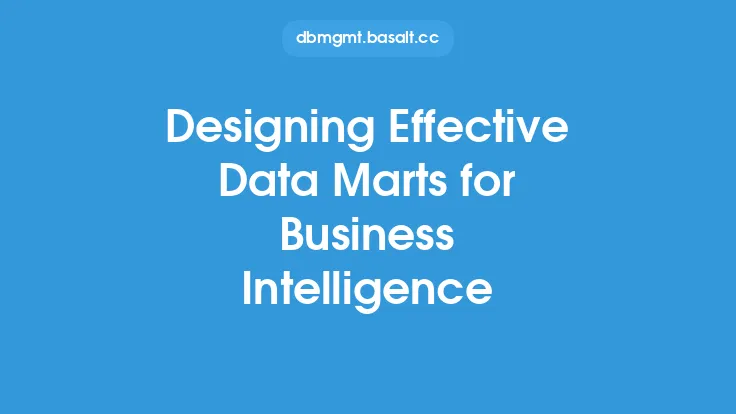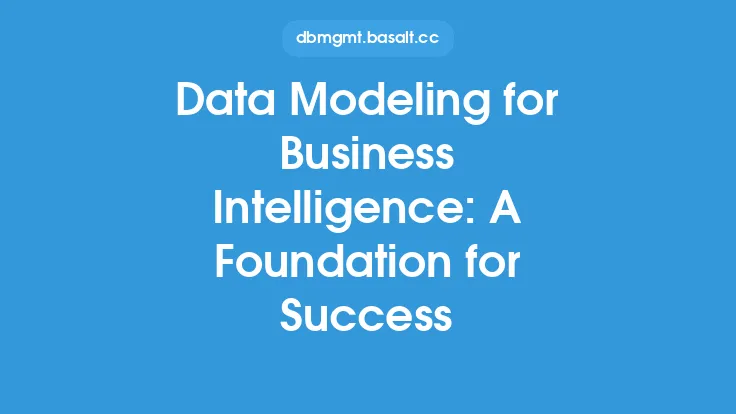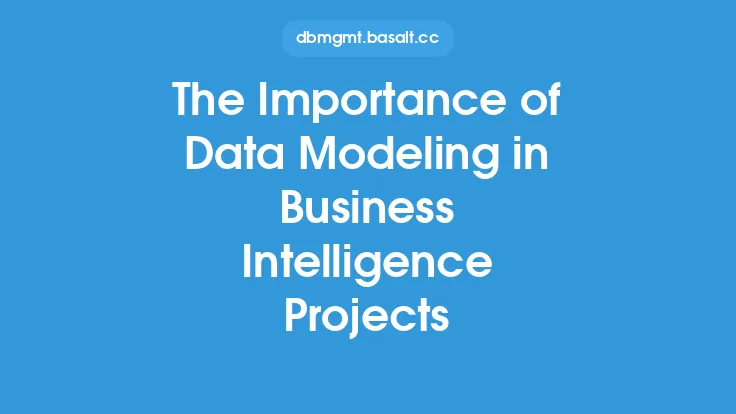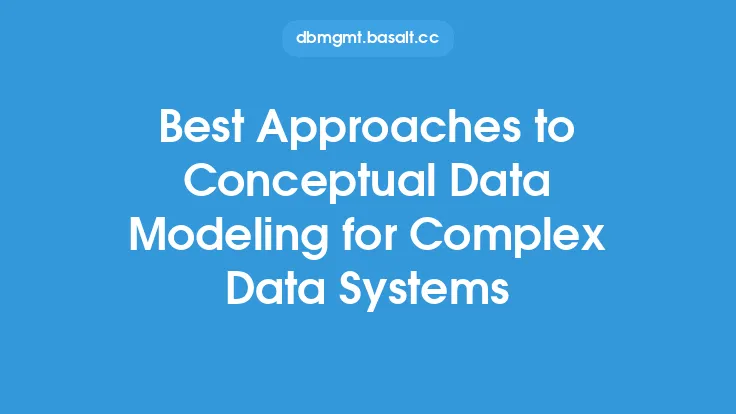Data modeling is a crucial aspect of business intelligence (BI) systems, as it enables organizations to make informed decisions by providing a clear and concise representation of their data. Effective data modeling involves creating a conceptual, logical, and physical representation of an organization's data, which can be used to support business intelligence and analytics. In this article, we will delve into the world of data modeling for business intelligence systems, exploring the key concepts, techniques, and best practices that can help organizations create a robust and scalable data model.
Introduction to Data Modeling
Data modeling is the process of creating a visual representation of an organization's data, which can be used to communicate the structure and relationships of the data to stakeholders. A data model typically consists of entities, attributes, and relationships, which are used to describe the data and its interactions. There are several types of data models, including conceptual, logical, and physical data models. Conceptual data models provide a high-level overview of the data, while logical data models provide a more detailed representation of the data. Physical data models, on the other hand, provide a detailed representation of the data as it is stored in a database.
Key Concepts in Data Modeling
There are several key concepts in data modeling that are essential for creating an effective data model. These include entities, attributes, relationships, and data types. Entities are the objects or concepts that are being modeled, such as customers, orders, or products. Attributes are the characteristics of the entities, such as customer name, order date, or product price. Relationships describe the interactions between entities, such as a customer placing an order or a product being part of an order. Data types, on the other hand, define the format and structure of the data, such as integer, string, or date.
Data Modeling Techniques
There are several data modeling techniques that can be used to create an effective data model. These include entity-relationship modeling, dimensional modeling, and object-relational modeling. Entity-relationship modeling is a technique that uses entities, attributes, and relationships to describe the data. Dimensional modeling, on the other hand, is a technique that uses facts and dimensions to describe the data. Object-relational modeling is a technique that uses objects and relationships to describe the data. Each of these techniques has its own strengths and weaknesses, and the choice of technique will depend on the specific requirements of the organization.
Data Modeling for Business Intelligence
Data modeling for business intelligence involves creating a data model that supports the organization's business intelligence and analytics requirements. This typically involves creating a data warehouse or data mart, which is a centralized repository of data that can be used to support business intelligence and analytics. The data model should be designed to support the organization's key performance indicators (KPIs) and metrics, as well as its reporting and analytics requirements. The data model should also be designed to support data governance and data quality, which are essential for ensuring the accuracy and reliability of the data.
Data Warehouse Design
A data warehouse is a centralized repository of data that can be used to support business intelligence and analytics. The design of a data warehouse typically involves creating a schema that consists of facts and dimensions. Facts are the measures or metrics that are being analyzed, such as sales or revenue. Dimensions, on the other hand, are the categories or attributes that are being used to analyze the facts, such as time, geography, or product. The schema should be designed to support the organization's business intelligence and analytics requirements, as well as its reporting and analytics requirements.
Data Governance and Data Quality
Data governance and data quality are essential for ensuring the accuracy and reliability of the data. Data governance involves creating policies and procedures for managing the data, including data security, data privacy, and data compliance. Data quality, on the other hand, involves ensuring that the data is accurate, complete, and consistent. This can be achieved through data validation, data cleansing, and data normalization. Data governance and data quality are critical for ensuring that the data is trustworthy and reliable, which is essential for making informed decisions.
Best Practices for Data Modeling
There are several best practices for data modeling that can help organizations create a robust and scalable data model. These include keeping the data model simple and intuitive, using standard data modeling notation, and documenting the data model. The data model should be designed to support the organization's business intelligence and analytics requirements, as well as its reporting and analytics requirements. The data model should also be designed to support data governance and data quality, which are essential for ensuring the accuracy and reliability of the data.
Tools and Technologies for Data Modeling
There are several tools and technologies that can be used for data modeling, including data modeling software, data warehouse management systems, and business intelligence platforms. Data modeling software, such as Entity-Relationship Diagram (ERD) tools, can be used to create and manage the data model. Data warehouse management systems, such as Amazon Redshift or Google BigQuery, can be used to manage and analyze the data. Business intelligence platforms, such as Tableau or Power BI, can be used to create reports and dashboards that support business intelligence and analytics.
Conclusion
Effective data modeling is a critical aspect of business intelligence systems, as it enables organizations to make informed decisions by providing a clear and concise representation of their data. By understanding the key concepts, techniques, and best practices of data modeling, organizations can create a robust and scalable data model that supports their business intelligence and analytics requirements. Whether you are a data modeler, a business analyst, or an IT professional, this article has provided you with a comprehensive overview of data modeling for business intelligence systems, and has equipped you with the knowledge and skills needed to create a successful data model.





